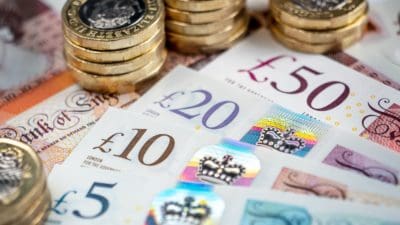Two of the FTSE 100’s dividend stalwarts, GlaxoSmithKline (LSE: GSK) and Royal Dutch Shell (LSE: RDSB), have both recently hit multi-year lows on concerns that neither company will be able to afford its dividend payout this year.
Indeed, at time of writing Royal Dutch Shell is trading at 1,783p, a five-year low, and the company’s dividend yield currently stands at 6.8%. Similarly, Glaxo’s shares are trading at a three-year low and support a yield of 6%, more than twice the FTSE 250’s average yield of 2.4%.
However, in today’s low interest rate environment, you’d be hard pressed to find other investments that support similar yields, making Glaxo and Shell perfect stocks for the income investor in my view.
The question is, are these market-beating dividend yields too good to be true?
A risky sport
Chasing yield can be a risky sport. You shouldn’t buy a stock just because it has a high dividend yield without first assessing the underlying business and sustainability of the payout.
And the most common way of assessing the sustainability of any dividend payout is to use the dividend cover ratio. Dividend cover provides an indication of how many times a company’s dividend payout is covered by earnings or profit generated from operations.
Unfortunately, Shell and Glaxo are cutting it fine when it comes to dividend cover. Based on current forecasts, Shell’s dividend payout is set to total 121.50p per share this year, compared to earnings per share of 128.1p, leaving little room for error.
Glaxo’s dividend payout will amount to 80p per share this year, although according to current forecasts the company is only expected to earn 77.2p per share. In other words, looking at the numbers, it seems as if Glaxo can’t afford its dividend payout.
Looking past the numbers
The figures may suggest that Glaxo and Shell will be forced to slash their dividend payouts, but other factors suggest otherwise.
For example, Shell has paid and increased its dividend every year since the end of the Second World War, and that’s an illustrious record management won’t want to break any time soon.
Luckily, the company has the capacity to maintain its payout at present levels in the short term as earnings fall. Shell’s balance sheet is relatively debt-free — net gearing is 14.3% — and analysts expect earnings to rise 24% next year, which should push the dividend cover back to a more conservative 1.3x.
Glaxo’s management has stated that the company’s dividend payout will be maintained at 80p per share for the next few years. While I’m always sceptical about management forecasts, I’m inclined to believe that this will be the case, and Glaxo’s payout isn’t going to be cut any time soon.
City projections suggest that the company’s dividend will be covered by earnings next year, and management expect steady earnings growth in the “mid-to-high single digits” from 2016 to the end of the decade.
The bottom line
So overall, Glaxo and Shell’s dividends look to be safe for the time being, presenting a once-in-a-lifetime opportunity for income investors.







